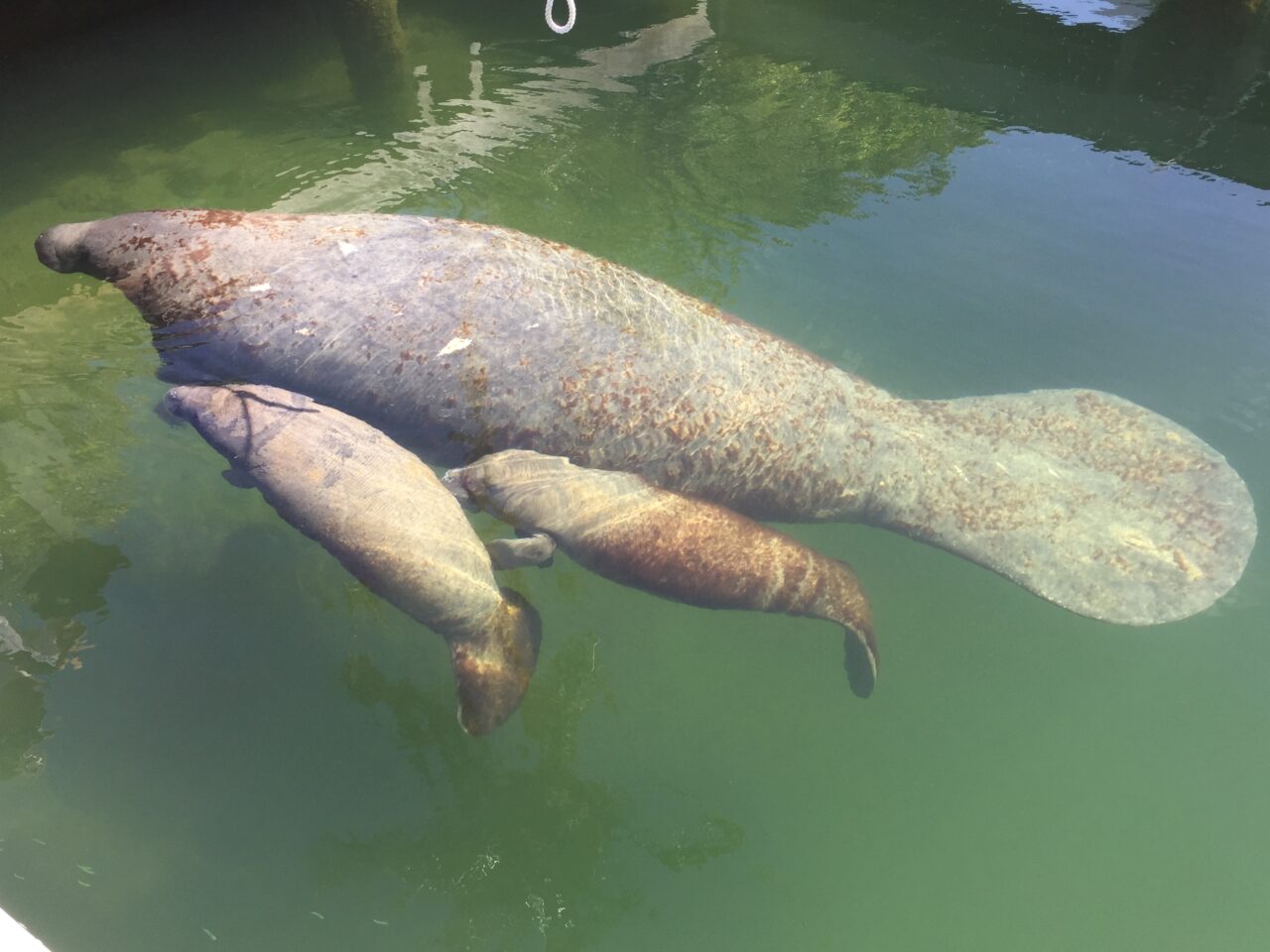
Florida’s love of manatees is well documented. They’re the state’s official marine mammal and the state even has a hotline for people to call if they see a manatee in distress, which sometimes just means the playful animal has found itself caught in a crab trap, according to Andy Garrett the state’s manatee rescue coordinator at the Florida Fish and Wildlife Research Institute.
“They’re very curious. I’ve heard them compared to the intelligence of a dog. There are some manatees that are going to a brain laboratory that they train to identify shapes and colors,” Garrett said.
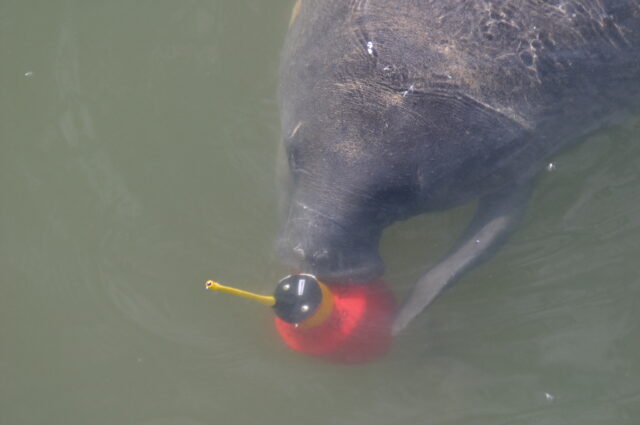
But Florida’s beloved manatees are now facing what Garrett described as a “sad reality.”
Marine biologists first started to log an uptick in manatee deaths in December 2020. This year manatee deaths are on track to double last year’s dead manatee county. Just halfway through 2021, Florida Fish & Wildlife Conservation Commission (FWC) logged 832 manatee deaths out of an estimated 6,300 manatees in Florida.
“It’s kind of a total collapse and now everyone’s scrambling because, what do we do?” Garret said.
Over his 22 years working with manatees, Garrett said he has seen other peaks in manatee deaths before, but this year the state is logging a record-breaking number of manatee deaths, often because of starvation.
“When we were doing our investigations and doing necropsies, we saw that they were in really bad condition. They had depleted fat stores, nothing in their GI systems. They were starving,” Garrett explained.
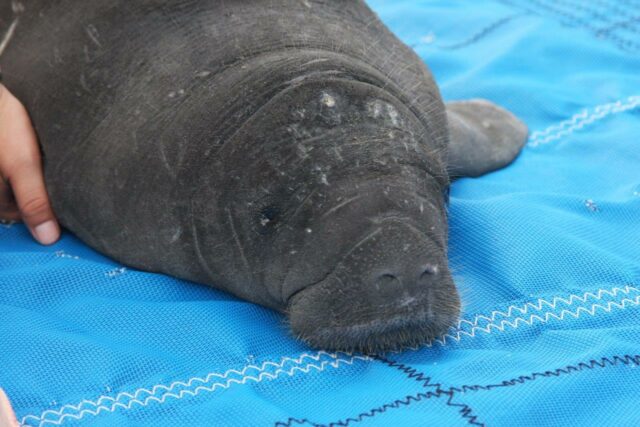
The number of starving manatees was enough to earn the label “Unusual Mortality Event” (UME) from U.S. Fish and Wildlife in February. The UME label, a designation declared 71 times since 1991, involves a significant die-off of any marine mammal population and “demands immediate response,” according to federal law.
But how to respond is still up in the air.
“We’re having meetings all over the place,” Garrett said of the biologists, veterinarians and federal managers working to save the manatees.
The cause of the manatee die-off is known. Seagrass, which manatees eat, is dying due to the eutrophication of Florida’s waters. Eutrophication happens when nutrients are in excess. Fertilizer runoff from agriculture and residential sources pollutes waterways. Eutrophication can cause blue-green algal blooms, which sit on the top of the water blocking sunlight seagrass and other parts of the ecosystem need to thrive.
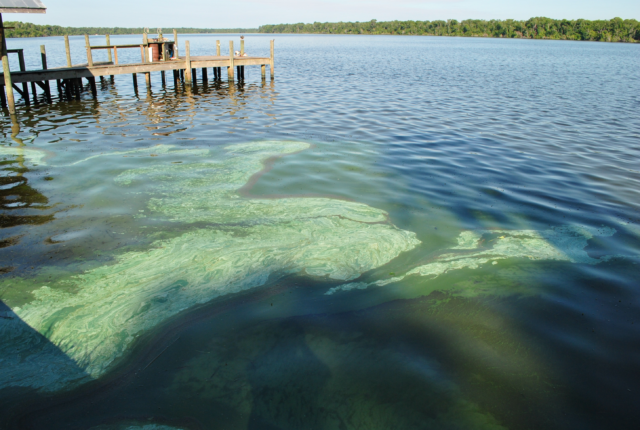
Algal blooms have been particularly bad in Indian River Lagoon, an area experiencing the highest number of manatee deaths. Garrett described what happened under the water in Indian River Lagoon as a “forest fire.”
“It’s a desert. The grass is gone. So, all of the animals that use that seagrass to live — fish, the crabs, the smaller shrimps and all of that — they’re all gone. I mean there’s nothing. There’s nowhere for them to live,” Garrett said.
Garrett said scientists have known about the issue for years, but the recent infiltration of algal blooms in Mosquito Lagoon, the last holdout for Indian River Lagoon manatees to eat seagrass during the winter, started filling up with algal blooms last year, contributing to the UME.
“The manatees are the ones that are last ones left, and when they’re dying off, then you know the ecosystem has totally collapsed,” Garrett explained.
Fixing an entire ecosystem is a “longterm” solution that could take years and requires human cooperation and re-cultivating seagrass beds, Garret said.
With another round of extreme manatee die-offs expected next winter scientists don’t have time to wait.
When the water gets colder during the winter, manatees like to hang out around power plants, which create warm water. Once there, manatees don’t like to venture back into cold water for food. That’s why the winter season is much worse for manatees if food sources near power plants are down, which is the case in many parts of Florida.
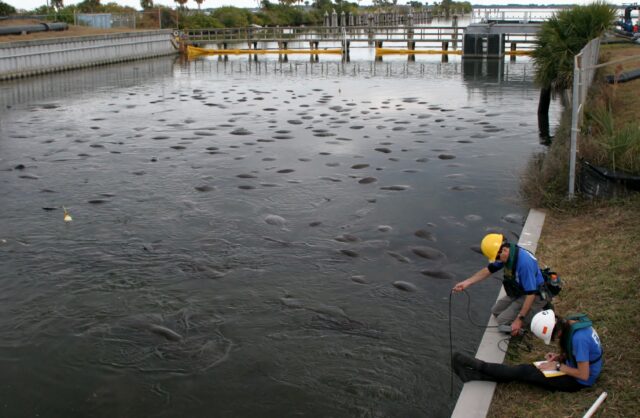
The seemingly obvious interim solution is to feed the manatees, but scientists don’t like feeding wild animals who can then become dependent on an artificial food source.
“It’s like feeding a squirrel or a duck in the park. Now they’re really relying on you to keep providing it, and is that a good plan? You can imagine the back-and-forth discussions. It’s like ‘Well if we don’t do this there might not be any manatees at the end of this to even have to deal with the issue later on,’” Garrett said.
Garrett said if they do decide to feed the manatees it would be a “directed and well thought out and controlled situation” with no assistance needed from citizens eager to help the manatees.
Other solutions bandied about, Garrett said, include planting other types of vegetation for the manatees to eat and asking a group that sprays errant vegetation in canals to stop doing that in case the manatees want to eat it.
In the meantime, Garrett’s team is fielding calls from citizens to the manatee distress hotline reporting sick manatees. If the manatees are determined to be sick or starving, teams of about 11 manatee rescuers are dispatched to capture and transport the animal, which sometimes weighs upwards of 1,200 pounds, to any of the four manatee hospitals in the state, which are fast filling up.
“People think of them as gentle giants, but they don’t want to be caught. They are a wild animal, so it’s really dangerous,” Garrett said.
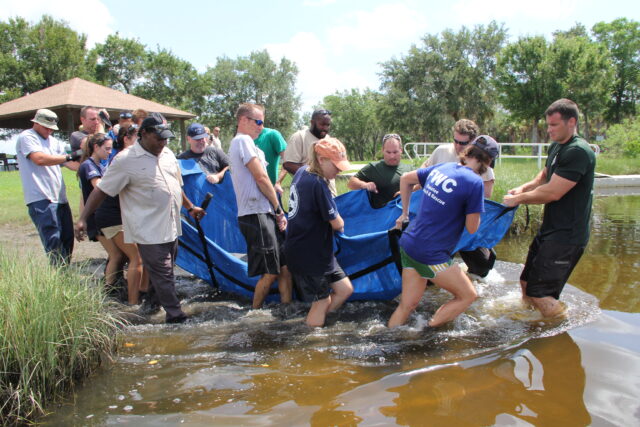
Manatee calves are becoming frequent hospital visitors as their moms starve trying to feed both themselves and their baby, Garrett said.
Once in the rehabilitation facility the goal is to get manatees back on their feet, so to speak, so they can be released into the wild. But even that is only a temporary fix as long as the ecosystem doesn’t have the food manatees need to survive.
“Obviously, we’re in our world. We’re worried about the manatees and trying to figure out something for them, but really the solution is a longterm one. They have got to figure out a way to clean up the water quality,” Garrett said.




One comment
Becky
August 20, 2021 at 8:59 am
I moved to Florida and to Manatee county.
I love these animals.
Comments are closed.